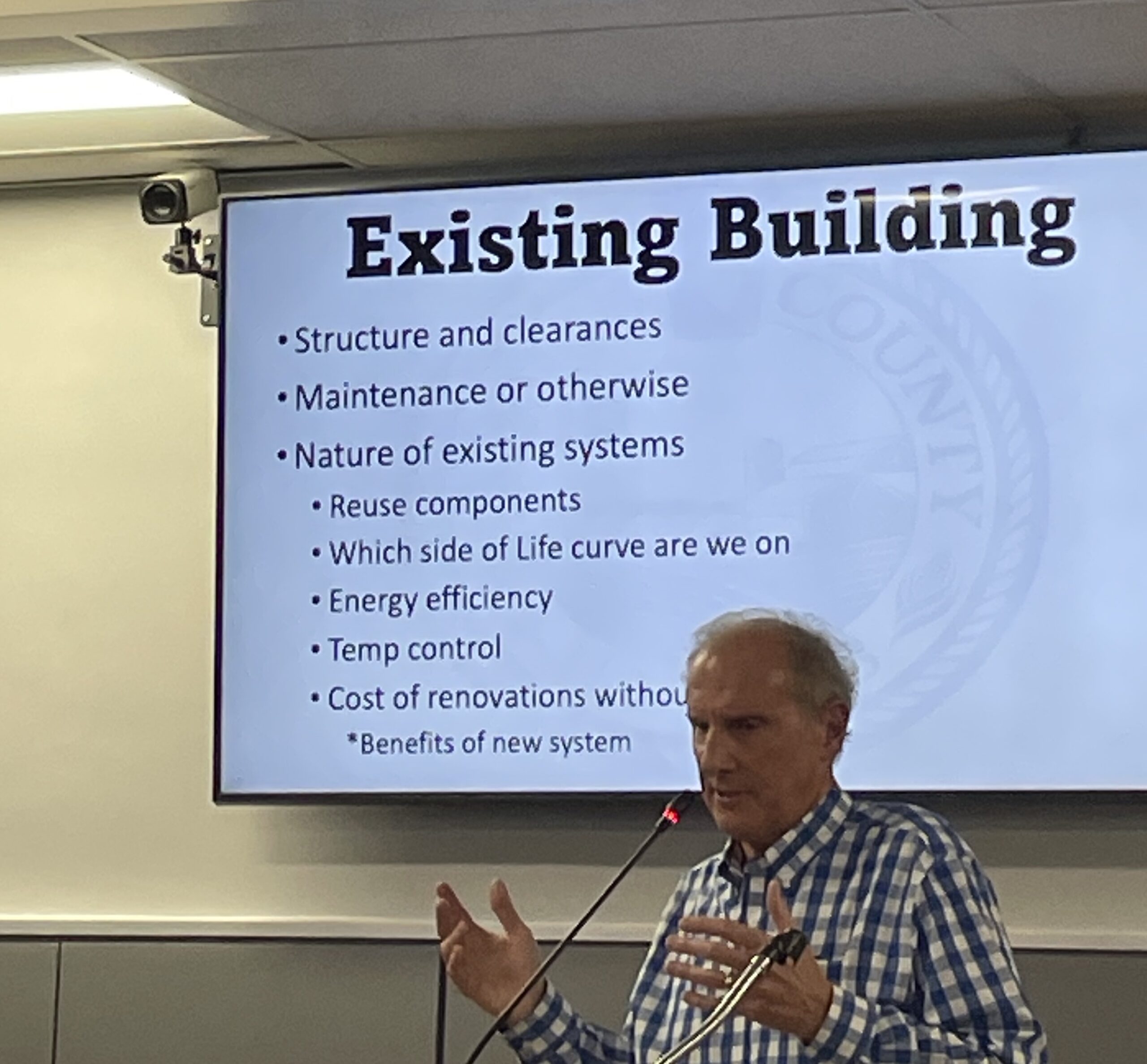Adams County Board receives HVAC replacement study

QUINCY — The Adams County Board heard a report from the firm who conducted the study on replacing the HVAC system in the courthouse, some of which has been in place since the building was constructed in 1947.
Thomas Buchheit with RTM Engineering presented the study to the Board at a special meeting Tuesday night. Buchheit has done work for the County in the past, including the system at the Adams County Health Department.
The Initial estimates to replace the system range from $7.5 million to $9.4 million. Buchheit said the price tag is on the high end and not a “bid price”, that he expected to come in lower, but the higher price includes the added cost of labor having the work nights and weekends in order to allow regular business to continue to be conducted in the Courthouse.
Buchheit said he wanted the County Board to know what they were getting into.
“It’s disruptive and it’s very expensive,” he said. “But I feel like we ought to replace these systems.”
The study was the only item on the docket for Tuesday’s special meeting. The Board will have its regular April meeting on Wednesday, April 10, meeting a day later than usual because of the Township annual meetings that will be held throughout Adams County on Tuesday, April 9.
Buchheit said the current system, most of which was installed in during the building’s renovations in the early 1990’s, is at the end of its expected lifespan. That system also utilized the larger steam pipes that are 74 years old and are less efficient because of their size for air conditioning as the building was built initially without central air.
Terry Bower, who is the director of maintenance for the Courthouse, said temperature fluctuations are a problem in the building. Buchheit said the building is more regulated during extreme hot or cold outside temperatures and less during mild conditions.
Buchheit suggested a variable refrigerant flow (VRF) system that can heat and cool areas of the courthouse separately. That would necessitate a complete replacement and going away from the current boiler-powered steam heat system. Bower told the Board he preferred this option as the steam heat provided by boilers still heat the building and condensation from those pipes does drip into ceiling tiles, which he said workers in the building mistake for mold.
Because the building has concrete forms throughout, Buchheit said rooftop units are not a viable option because of the cost of cutting through the concrete columns, beams and floors.
Board members asked questions, but no action was taken.
Miss Clipping Out Stories to Save for Later?
Click the Purchase Story button below to order a print of this story. We will print it for you on matte photo paper to keep forever.

